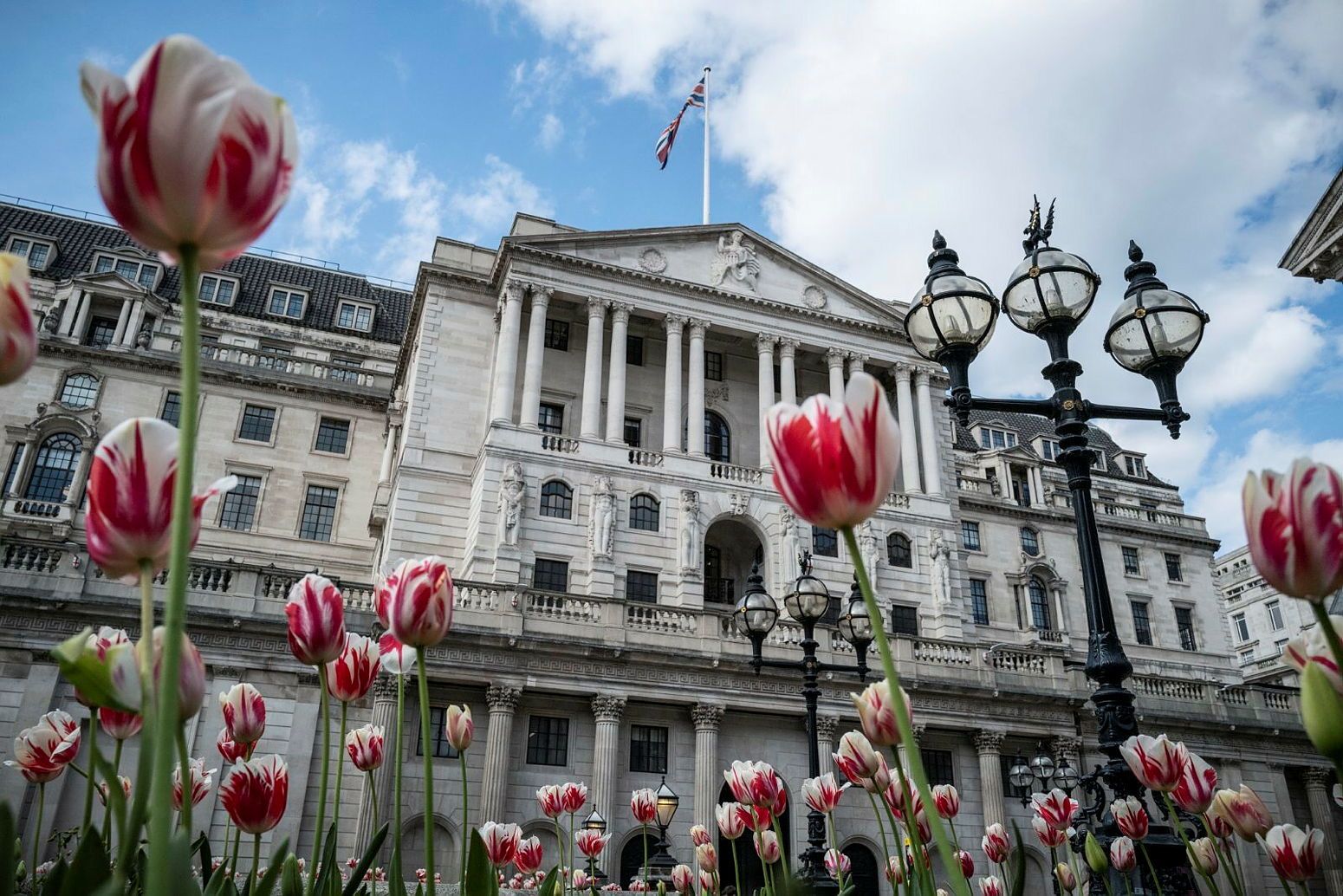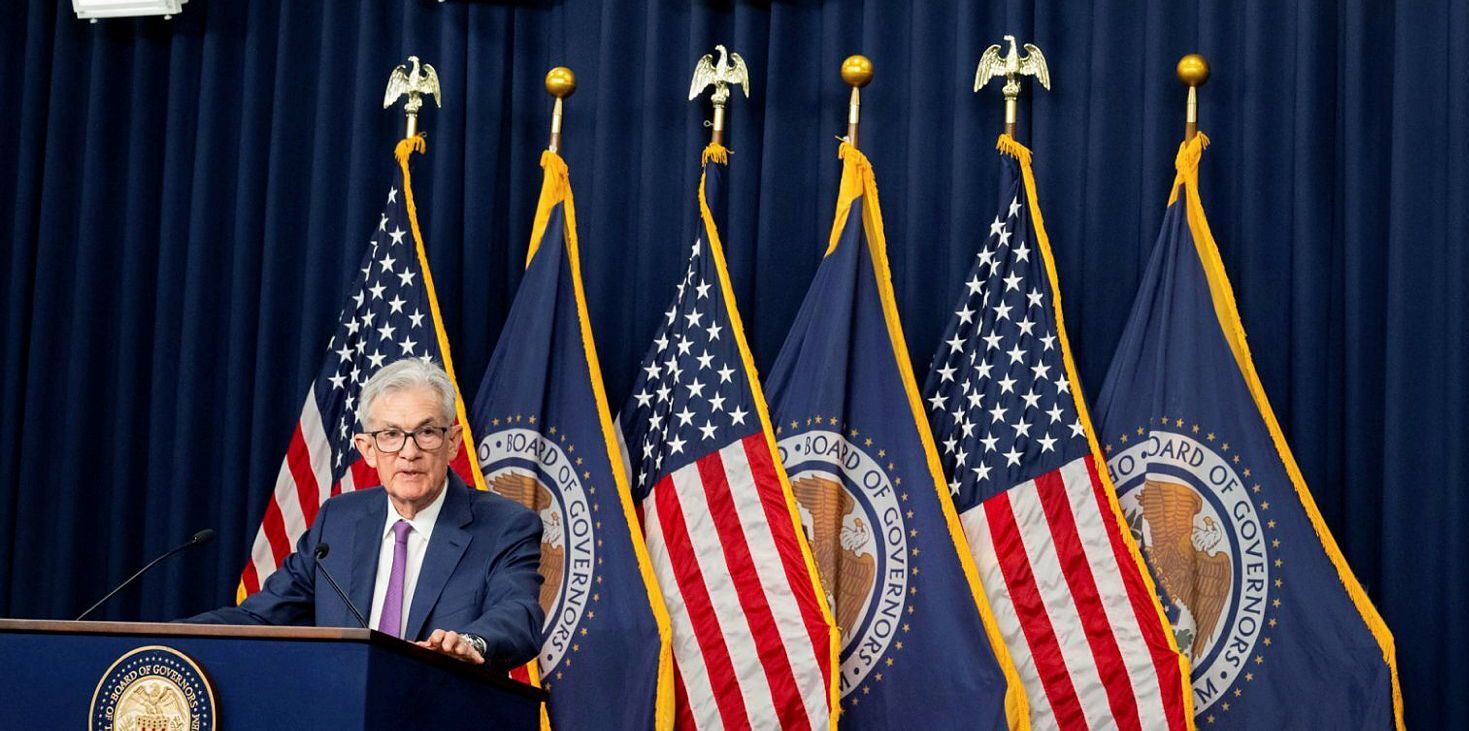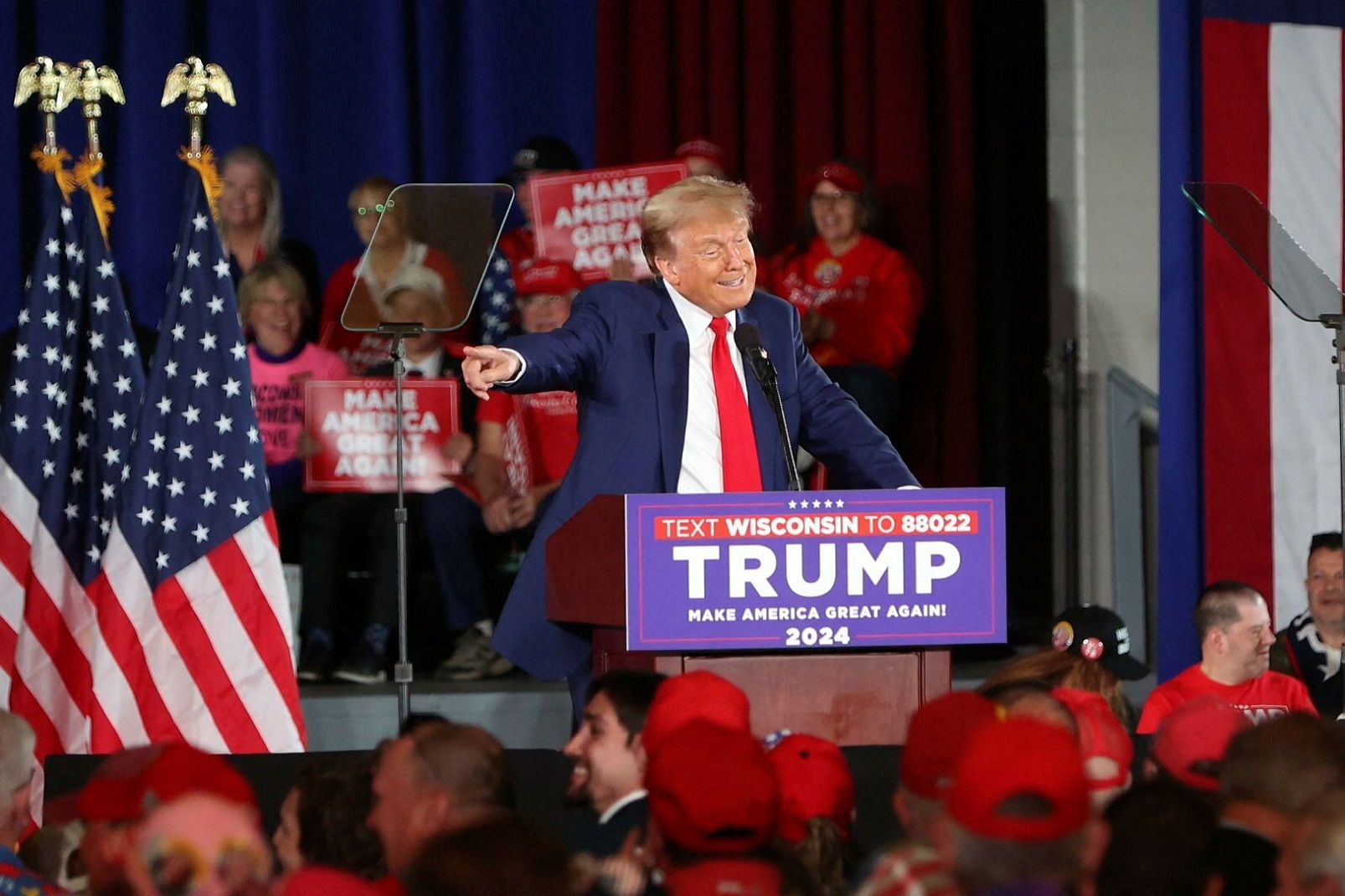Navigating fixed income
How challenges in the bond market are presenting investors with new opportunities

As the UK looks to hit its 2 per cent inflation target in the coming months, to what extent can it be sustained amid ongoing headwinds?
A tight labour market and strong wage growth continue to drive elevated services inflation.
Meanwhile the persistence of inflation, especially in the US, is a challenge, as well as the potential for oil and commodity-price spikes.
What does this all mean for fixed income investors?
This report is worth 30 minutes of CPD.
How challenges in fixed income are presenting new opportunities
For the past two decades bonds were like an insurance policy for stocks.
But sustained high inflation has turned that happy relationship upside down.
It is looking likely that the UK will meet its inflation target of 2 per cent or possibly even below in the coming months, but the more important question is when it will meet its inflation target in a sustained way.
While the falling prices of goods and energy prices will contribute to bringing headline CPI back to the Bank of England’s target, it remains uncertain whether this can be sustained against a backdrop of a tight labour market and strong wage growth, continuing to drive elevated services inflation.
Richard Carter, head of fixed interest research at Quilter Cheviot, says: “We expect the UK to hit the BoE’s inflation target in the next few months due to the waning impact of higher food and energy prices.
“This is encouraging as it increases the chances of interest rate cuts this year, although we should not forget that wage growth remains elevated and there is always the potential for inflationary curve balls given geopolitical tensions.”
The yield picture
For fixed income investors in government bond markets, Emma Moriarty, investment manager at CG Asset Management, says there appears to be a shifting paradigm, driven by the higher and more uncertain inflation environment.
Moriarty adds: “This what it means for the yield curve over the year ahead. On one hand, short-term interest rates remain anchored to central bank rates and communications. But longer-term interest rates are being pushed up by geopolitical tensions, more sustained inflation and indigestion from government bond issuance to finance fiscal deficits.
“Neither of these interest rate dynamics appear sustainable over the medium to long term. So it becomes a question of when something breaks – and being able to find the appropriate balance of taking advantage of good value and being mindful of the risks in an environment characterised by higher uncertainty.”
According to Carter, the impact on fixed income markets as uncertainty remains about when rates will come down means that bond markets have struggled somewhat this year because expectations for interest rates cuts have had to be pushed back, especially in the US where inflation has been sticky and growth has been resilient.
We expect the UK to hit the BoE’s inflation target in the next few months due to the waning impact of higher food and energy prices.
He adds: “This has pushed up yields in most areas of the market and gilts have not been immune, given the close correlation of most developed bond markets.
“US rate markets are now only discounting 0.4 per cent of cuts in the US in 2024 and around 0.5 per cent in the UK, a big change from where we began the year.”
Stuart Chilvers, fund manager – fixed income at Rathbones, also notes that the massive repricing in expected interest rate cuts for 2024 so far this year has seen government bond yields move significantly higher, with elevated volatility seen in government bonds as well, given the uncertain outlook for interest rates.
“However, the other side of this is the reason these interest rate cuts have been priced out – economic data has generally surprised on the upside. With the risk of a meaningful downturn judged to have receded, credit spreads have tightened meaningfully so far in 2024,” Chilvers adds.
Nimble thinking required
While the amount of volatility Chilvers is seeing in government bond markets presents opportunities to investors, he says this same volatility means that there is a need to be “nimble in order to take advantage of these opportunities”.
Chilvers adds: “We also think that despite the credit spread tightening we have seen year to date, investment-grade credit is still attractive given the high level of carry being generated. We are more circumspect on high-yield credit at these valuations, although we are still finding some pockets of value here.”
For Carter, he also sees opportunities for investors in government bond yields in the UK and the US, which are not far off the highest level in 10 years and, with inflation falling, offer a healthy real return.
He adds: "Yields at the shorter end of markets are particularly attractive given high cash rates and come with little interest rate risk.
“We particularly like the opportunity in short-dated low coupon gilts, which can be tax-efficient and offer post-tax yields of around 4-4.5 per cent. Investment-grade corporates should also continue to fare well given resilient economic growth.”
It will not be a straight line to a lower rate and yield environment.
Outlining what he sees as the challenges for fixed income investors, Darius McDermott, managing director of Chelsea Financial Services, says it centres on inflation proving more persistent than anticipated, potentially delaying anticipated rate cuts until 2025 or even necessitating upward rate adjustments.
“While the latter scenario does not represent our core view, it is certainly possible,” McDermott adds.
“Meanwhile, soaring government debt and deficits, particularly in developed markets like the US, are raising concerns. Without continued quantitative easing from the Federal Reserve, these governments will need to find buyers for ever-increasing debt issuance, potentially forcing yields higher.
“Also, rising bankruptcies and stress created by higher interest payments may threaten the health of the corporate bond market.”
McDermott says with starting yields on fixed income assets north of 5 per cent, and exceeding 7 per cent in many cases, investors have an opportunity to “lock in good income for years to come”.
He notes: “Additionally, there is potential to benefit from capital appreciation as interest rates are set to decline, albeit cuts may be further away than was projected at the start of the year.”
Markets are now in a phase where credit spreads have compressed while interest rates have peaked in many countries. Dispersion within credit markets has also decreased.
No easy opportunities
This, according to Luke Hickmore, investment director – fixed income at Abrdn, indicates that the easy opportunities in fixed income are gone.
Considering the opportunities for investors, he says it is important to look at the direction yields are going in.
He says: “I look at it from how much of the yield in bonds comes from what source – from gilts and/or from credit. Right now about 20 per cent of the all in yield comes from credit and 80 per cent from gilts.
“That leads me to a simple conclusion. Concentrate on which direction yields are going to go in for government bonds, when interest rates will be cut and when that will start to impact yield levels right along the maturity curve. Switch from credit management to duration management. Interest rates will fall, yield will come down.
“But it will not be a straight line to a lower rate and yield environment. That is the opportunity to add duration when yields rise. Concentrate on European and UK yields over the US for now.”
Meanwhile, Rob Perrone, investment counsellor at Orbis Investments, likes US Treasury inflation-linked securities (Tips) for the protection they offer against inflation.
Perrone says: “Markets expect inflation to politely and permanently return to 2 per cent. That looks complacent in a world of tight labour markets, de-globalisation, rising defence spending, and a bumpy energy transition.
“Tips protect against higher-than-expected inflation, and in the meantime they offer a locked-in 2.3 per cent real yield.”
As we enter a new era of bond investing, where we have returned to an old normal of higher for longer yields, we believe bonds will now generate the value part of a portfolio.
For active bond investors with the ability to take flexible positions across different bond types – and can also do the hard research especially within credit – Carlo Putti, investment director at M&G Investments, says he is seeing interesting options for investors in duration and credit.
Putti says: “We think duration, for the first time in a long while, looks an attractive opportunity because there is still potential for bond yields to decrease further in 2024. The risk-reward in US treasuries for instance continues to be favourable in this regard.
“Another interesting area is credit, where it pays not to fully commit given the uncertainty in valuations and an environment of positive yet subdued growth.
"Here, we favour higher quality companies issuing in the short to middle part of the credit curve, while we have been reducing exposure to longer dated corporate bonds due to considerable flattening of the credit curve.
“In terms of sectors, we are becoming more selective with financials and have a preference for European banks over US banks due to their lower leverage, stronger regulation, and generally limited impact from regional banks.”
Navigating challenges
While there is a mixed bag of opportunities for fixed income investors, it would appear that it is the same for the challenges.
Chilvers says while the continued heightened volatility in government bond yields driven by a macroeconomic environment that has consistently surprised relative to forecasts presents opportunities, it is also a challenge.
He adds: “It introduces a level of volatility into fixed income investments that is higher than has been the case for much of the past decade. However, the move in yields means we are being compensated for this higher volatility.
“The tightening we have seen in investment-grade credit spreads means there is a need to be more discerning when looking for opportunities. For instance, we are still finding value in financials, but we are being more selective given the compression in credit spreads we have seen.”
The role of fixed income as a diversifier from equities hasn’t changed much.
In addition, James Sullivan, head of partnerships at Tyndall Investment Management, notes that constant challenges in fixed income are: calling duration correctly, finding the right balance between governments and credit, and navigating safely the excess supply of bonds that will inevitably be the case over the next few years.
Sullivan adds: “The additional consideration is that, given the relative cheapness of some pan-European equity markets, should one be taking more risk from lowly valued equities with strong yields, than from the credit market on tight spreads?
The persistence of inflation, especially in the US, is a challenge as well as the potential for oil and commodity-price spikes.
Quilter Cheviot’s Carter says: “The US election may also be a headwind for fixed income given the risk of major tax cuts by Donald Trump at a time when deficit and debt burdens are high.”
Role of bonds
As a result of the volatility experience in the fixed income market in recent years, the role of bonds in a portfolio looks to be expanding beyond the diversification benefits.
Alex Ralph, senior fixed income fund manager at Nedgroup Investments, says: “As we enter a new era of bond investing, where we have returned to an old normal of higher for longer yields, we believe bonds will now generate the value part of a portfolio.
“During the QE era, bond investors, buoyed by ever-decreasing yields, opted to invest in equity-like instruments to generate returns and act as a growth asset. Now bonds generate an income stream above inflation we believe bond funds will go back to acting as a diversifier to growth.”
Meanwhile, Carter says as well as acting as a diversifier bonds can also offer solid return.
He adds: “The role of fixed income as a diversifier from equities hasn’t changed much, although both markets can, at times, both be driven by the same things, especially inflation and central bank policy.
“However, the rise in yields means that bonds offer attractive long-term returns in excess of inflation and that should be welcomed. It also means lower risk, more cautious investors can earn a solid return by investing in shorter dated bonds.”
ima.jacksonobot@ft.com





